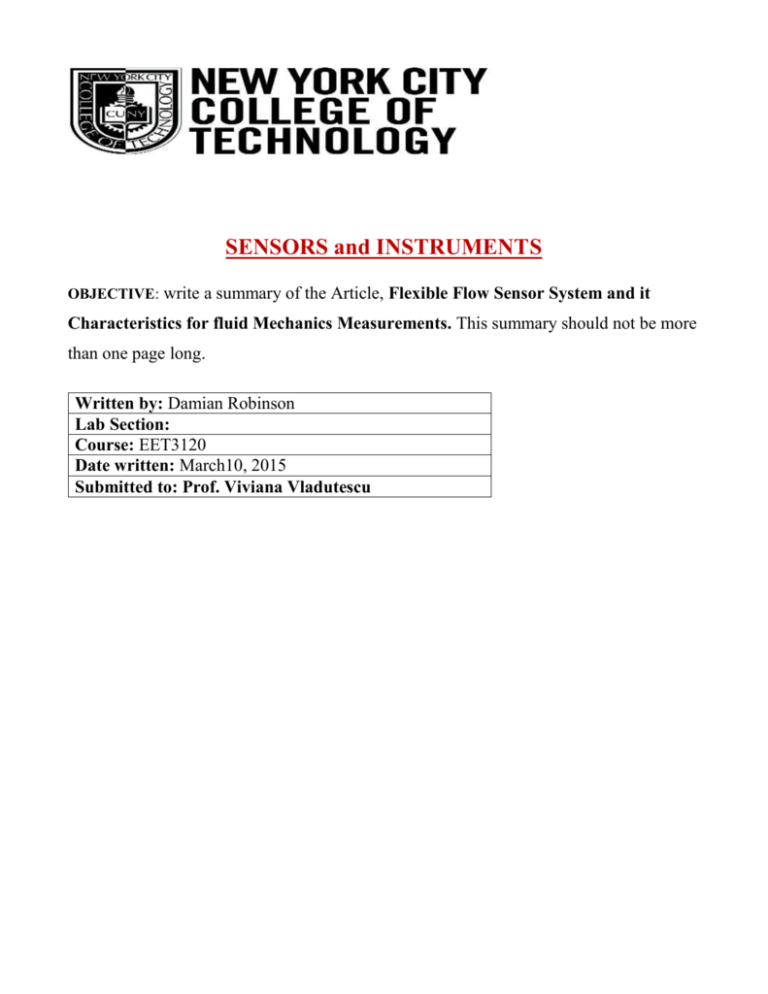SUMMARY (Flexible Flow Sensors)
advertisement

SENSORS and INSTRUMENTS OBJECTIVE: write a summary of the Article, Flexible Flow Sensor System and it Characteristics for fluid Mechanics Measurements. This summary should not be more than one page long. Written by: Damian Robinson Lab Section: Course: EET3120 Date written: March10, 2015 Submitted to: Prof. Viviana Vladutescu The Flexible Flow Sensor System for Fluid Mechanics Measurements The flexibility of sensors and it's robustness along with its improved reliability to give accurate reading has been improving over the years. One such sensor is a "micro-machined Hot-air flow sensors system". The sensor electrodes and the electronic circuits or preprinted on a flexible substrate called polyimide (PI), that is fabricated on a flexible printed circuit board, with the sensing elements in a special process. The measurement of "Fluid Mechanics" (velocity, pressure, temperature, density) is used and applied to obtain important and accurate data measurements. The hot film of the sensor uses a "joule heater" and a "temperature sensor". The Principle of Operation of the “Hot Film Flow Sensors” is in its ability to detect "heat transfer" through convection because of an electrically heated resistance sensing element (Hot - Film) and fluid flow. The hot- film is heated at a higher temperature than it surroundings so it’s therefore experience cooling due to heat transfer. This heat transfer is dependent on the velocity of the fluid. Measuring the flow of liquid is done without any moving parts. The flow parameters is divided into two speciality, which are "normal pressure exerted on the surface" of the sensing instrument and the "shear stress along its surface". Both these information is important in determining the fluid Mechanics such as velocity. The Hot film flow sensors experience heat loss due to the fluid flow, and is accomplished by monitoring the resistance change in temperature. The thermal element of hot film flow sensor is made of the composite materials, Nickel, platinum, and chromium as the bonding layer for Nickel and platinum. These thermal sensing element are deposited on a flexible printed circuit board by a process called "Magnetron Sputtering". After the fabrication of the sensing element on the flexible printed circuit board a post treatment is performed to make the sensing element "stable" and "durable". Because of this post treatment "structural defects" and "internal Stress" are eliminated and "stability of the sensing element improved. The modes of operation for the Hot Film Flow sensor are "constant voltage (CV)", Constant Current (CC)" and "Constant Temperature (CT) modes. The constant temperature mode is the better mode of the two because of the higher sensitivity and quicker frequency response.











